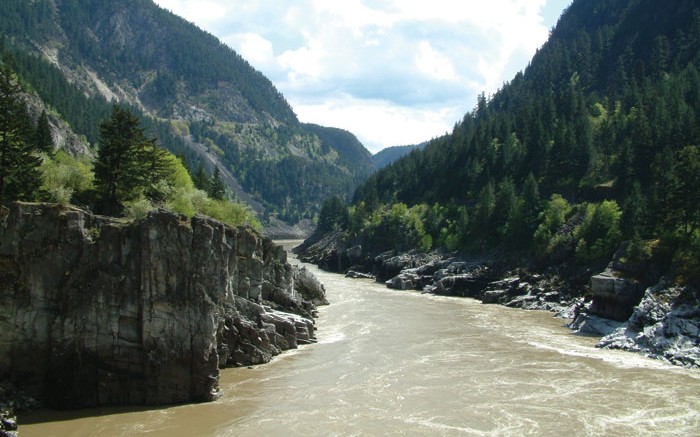Scrutiny of water-use policies and regulations, and concern that provincial governments across Canada need to better regulate industrial water use, have become more prominent in recent years, particularly after the recent droughts in B.C. and Alberta.
This increased scrutiny of the impacts of mining operations on surface and groundwater could have broad implications for mining and energy projects, including curtailing project development through the refusal to issue or renew water licences on terms that make mining projects feasible.
A recent example includes a Northwest Territories mining project where the regulator has warned the project proponent that it could lose one of its water licences for failure to comply with requirements for spring water sampling. Other examples from the energy sector should also be considered highly relevant to Canada’s miners. Of note is the British Columbia government’s 2015 decision to cancel a pre-existing water licence related to fracking activities after the government’s determination that the original issuance was based on poor science and that the proponent did not properly consult with the affected First Nations.
In some Canadian jurisdictions, the statutory regime is catching up with the increasing concerns around water use by the natural resource sector. For example, in B.C., the provincial government passed a Water Sustainability Act in May 2014 that introduces the first substantial changes to the province’s water-use laws in over 100 years.
The new statute, which came into force on Jan. 1, 2016, extends the water-use regime from surface water (lakes and streams) to groundwater (which is pumped from wells); regulates water use in times of scarcity to address impacts of droughts and other water shortages; provides for a more comprehensive consideration of environmental issues relating to water use; and allows for the prioritization of certain water uses for environmental, domestic and animal purposes.
While B.C. undergoes some of the most significant changes to water-use legislation in recent years, other Canadian jurisdictions are also moving forward with changes impacting water use. Federal Bill S-6, the Yukon and Nunavut Regulatory Improvement Act (YNRIA), amended both the Yukon Environmental and Socio-economic Assessment Act and the Nunavut Waters and Nunavut Surface Rights Tribunal Act after receiving royal assent on June 18, 2015.
One of the most important and controversial changes made by the YNRIA is the ability for the federal minister to give binding policy directives to the Yukon Environmental and Socio-economic Assessment Board.
Opponents of this change argue that it shifts the power balance in favour of the federal government in negotiations between First Nations and the governments of Yukon and Canada.
Notably, a federal power to make policy directives is not unique to the YNRIA: the same legislative power exists in the Northwest Territories’ Mackenzie Valley Resource Management Act, which governs the decision-making boards that regulate the use of land and water and conduct environmental assessments of proposed developments in the Mackenzie Valley.
Though water use is largely provincially regulated, there is also a complicated network of federal legislation with the potential to significantly impact the regulation of water use, including: the Fisheries Act, Fish Protection Act, Canadian Environmental Assessment Act, Navigation Protection Act, National Energy Board Act and Species at Risk Act.
Constitutionally, the provincial governments have jurisdiction over water use while the federal government has jurisdiction over fisheries, navigation, federal lands (including lands administered under the Indian Act) and international relations, as well as responsibilities for agriculture, health and the environment.
This division of powers often results in overlapping legislation, and water-use regulation is a clear example of this overlap.
Jurisdictional rights to regulate water use can be further impacted by complex historical agreements between the federal government and certain provinces, and by a growing body of Canadian constitutional and aboriginal law.
As water use becomes an increasingly central environmental and social issue, mining companies may be compelled to place greater investment in water management.
Particular attention must be paid to the evolving network of law and legislation, both at the provincial and federal levels, to ensure that they meet their obligations in connection with water use in the development and operation of mining projects.
Acquiring and maintaining a real-time understanding of the shifting statutory requirements and limitations imposed by water-licencing regulations will be essential in successfully navigating the issue of project-related water use. It’s an issue that appears to be emerging as a primary one for the development and operation of successful mining projects in Canada.
— Based in Vancouver, Karen MacMillan is a partner at Lawson Lundell LLP. She practises corporate and commercial law with an emphasis on commercial arrangements in the mining sector, including advising on asset-level purchase and sale transactions, joint ventures, royalty agreements, procurement matters and construction and engineering. She can be reached at kmacmillan@lawsonlundell.com.
Khaled Abdel-Barr is a partner at Lawson Lundell. Based in Vancouver, his practice includes corporate/commercial and mining law, and he advises on a range of mining-related matters domestically and internationally. He can be reached at kabdelbarr@lawsonlundell.com.
Lawson Lundell is a leading western Canadian business law firm with offices in Vancouver, Calgary and Yellowknife. Visit www.lawsonlundell.com for more information.



Be the first to comment on "Commentary: Tapped resources – Water use and its impact on mining in Canada"